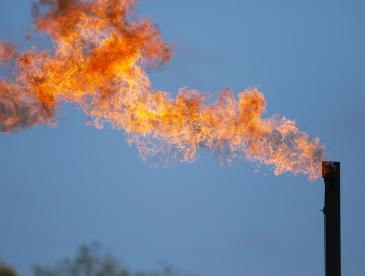
Cutting methane pollution to slow climate change
The problem: Methane pollution released this year will warm the planet more in the next decade than carbon dioxide emitted from burning fossil fuels. While cutting methane is the single fastest way to slow the rate of global warming, current efforts fall far short of the drastic reductions we need.
What we’re doing about it: Through research and advocacy, we’ve been driving global action to cut methane pollution for over a decade, and we built a methane-tracking satellite to help scale reductions worldwide. Our goal is to reduce global methane emissions from the energy and agricultural sectors by at least 30% below 2020 levels by 2030.
Watch now: How we can cut methane pollution
In this TED Talk, EDF’s Daniel Zavala-Araiza shares why reducing methane emissions is crucial.
Our work slashing global methane emissions
- Project
We launched a satellite to fight climate pollution and slow global warming
- Article
Planet-warming methane pollution far exceeds EPA estimates
- Explainer
How methane harms our health and what we can do about it
- Timeline
Our groundbreaking push to cut methane on 3 critical fronts
- Project
Unearthing Pennsylvania’s legacy of orphan and abandoned wells
- Expert Voices
Global food companies join EDF for a groundbreaking step on dairy methane
Updates
Read the latest articles, blogs and press releases on methane.
-
Colorado scores a win for communities and cleaner air
Article, -
Clearing the air: The EU’s methane regulation is a climate solution — not a trade pawn
Blog post, -
Watch this TED Talk about the fastest way to slow global warming today
Video, -
A Win for Communities: Colorado Strengthens Requirements for Air Quality Monitoring near Oil and Gas Sites
Blog post, -
National oil companies & global finance: Unlocking opportunities to reduce methane emissions
Blog post, -
The Colorado way delivers with a unanimous vote for a groundbreaking oil and gas methane rule
Blog post,
Methane pollution resources
Dig deeper into our work with these resources for researchers, policymakers, journalists and communities.
- Overview
Our cutting-edge science is guiding global action to cut methane
- Overview
Helping livestock farmers cut methane emissions
- Video
Bill Nye the Science Guy highlights the fastest way to slow global warming
- Article
EDF study: The fastest way to save melting sea ice
- Explainer
Methane: A crucial opportunity in the climate fight
- Video
See how MethaneSAT will protect the climate
Our methane experts
Staff perspective
By emitting even a little bit of methane, humankind is greatly accelerating the rate of climate change.
Steven Hamburg
Chief Scientist
Media contact
Lauren Whittenberg
(512) 784-2161 (office)





















